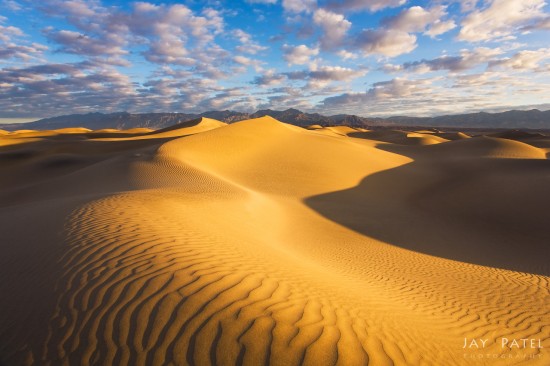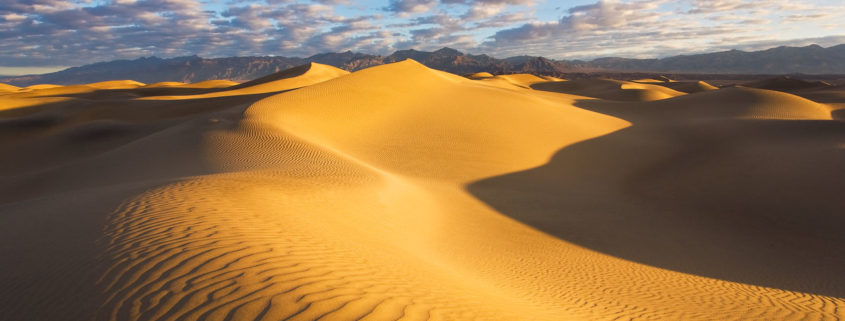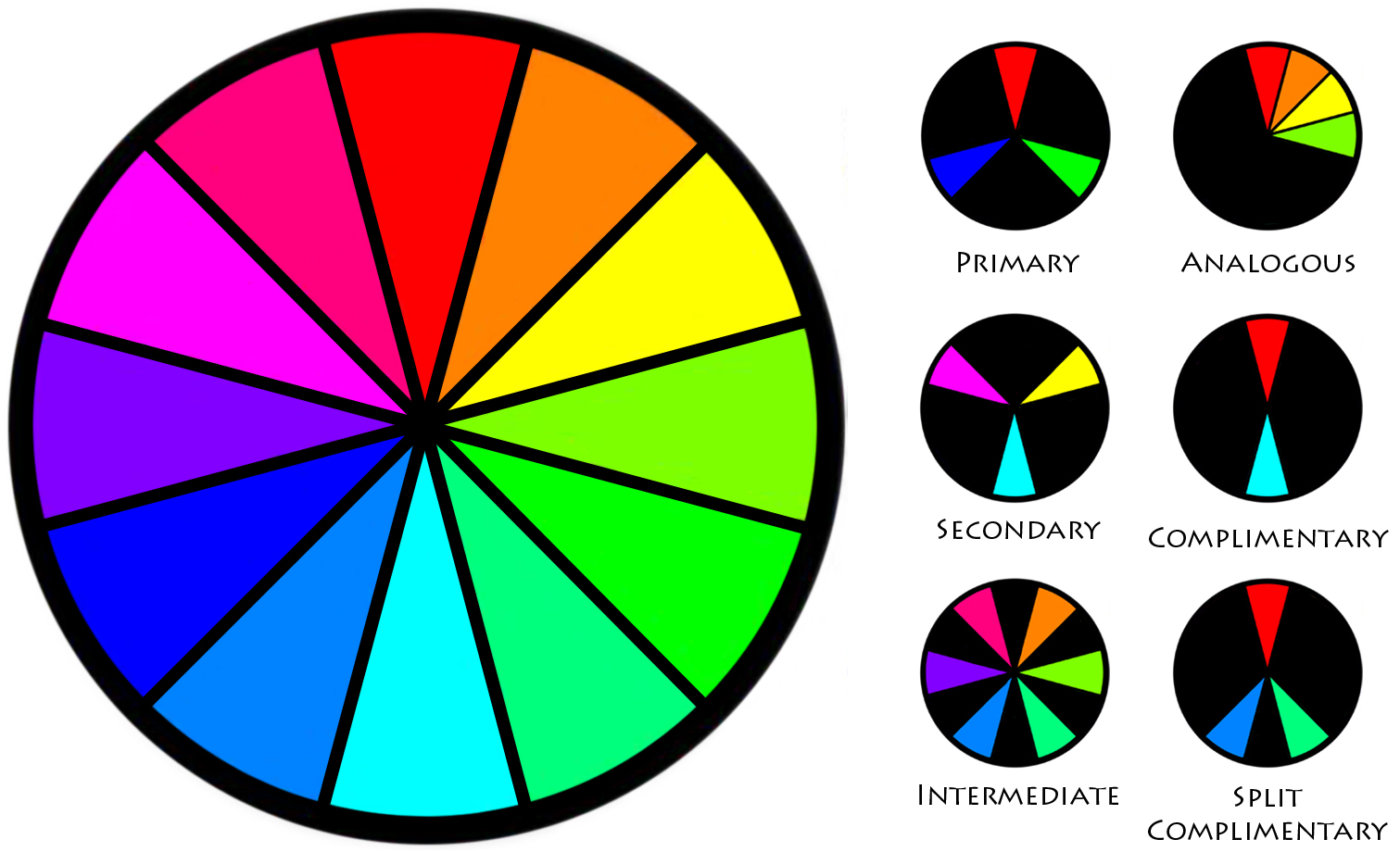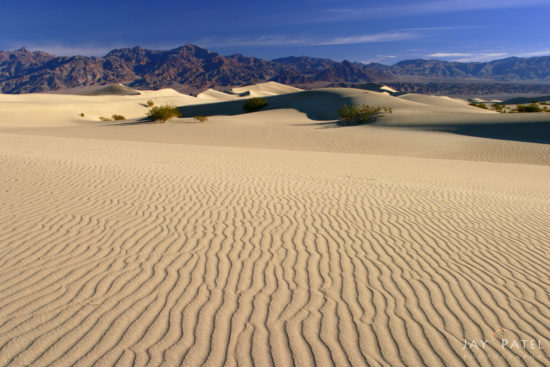Photographing Complementary Colors
I love photographing in Death Valley and one of my favorite places is the dunes. Repeating patterns and pristine wilderness make it an artist’s paradise and a landscape photographer’s must-see place. Most people are attracted to the biggest and tallest dunes; we landscape photographers try to avoid them. Why? Because they are often covered with footprints. Less popular dunes can provide you with a pristine shot like the one shown below.

Blue-Yellow complementary colors in Mesquite Dunes, Death Valley National Park, California (CA), USA
What makes this image so striking? Is it the patterns? Is it the fact that it does not have any footprints… and represents the pristine wilderness that we all dream about? Or maybe it’s the colors?
The answer? All of the above. To me, the most important factor is the color. Orange and blue are complementary colors which means they are located directly across from one another on a color wheel. When complementary colors are placed side-by-side, they become more vibrant. The contrast between the colors in the image above seem to grab you and demand your attention. The rich side-lighting makes the image even more eye-popping which enhances the golden sand and beautiful rippling patterns. To capture complementary colors like these, I spread out the legs of the my tripod as wide as possible and used a short center column to get my camera close to the ground. This low perspective allowed me to minimize my mid ground and bring the golden sand closer to the sky.
Compare this to the image image below which was taken just a few hundred yards away from the earlier dunes image. We shot this photo around midday. Although it lacks the complementary colors, it has other characteristics such as the patterns and a lack of footprints.
Note that only using complementary colors is not enough for incredible photos. We also use the right gear (camera, lens, tripod, and filters), the correct exposure, and proper composition techniques to capture these stunning photos.
This breath taking photo was shot in Dry Tortugas on a bright sunny day in middle of the afternoon. This time around I used my tripod to place the camera about 3-4 feet above the ground. This perspective allowed me to maximize the area of turquoise in my fame. By placing this turquoise water next to it complementary color (red fort) made created for an superb color contrast throughout the image.
Similar technique was used in this next photo from Grand Tetons National Park. This time, I choose a higher perspective and even extended the center column of my tripod to get maximize the green mid ground area surrounding magenta reflections in the small pond.
For this macro shot from Smoky Mountain National Park, I used a long lens to magnify the green background behind the pink columbine. I used a tripod to avoid the camera shake and circular polarizer to bring out the rich details and colors in the image. By using an appropriate aperture I was able to make my subject stand out from the blurred background.
So… remember to use complimentary colors to really make an image pop and to call attention to an important element in your photo.







